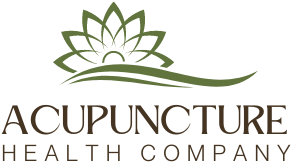Acupuncture for Acute & Chronic Pain
Acupuncture is well known to be an effective treatment for acute and chronic pain; most commonly, patients come for treatment of back pain, joint pain, neck pain and headache. The greatest advantage of acupuncture over Western medicine is that it has no side effects, unlike some medications, and it is non-invasive.
Acupuncture has been and is being studied for its efficacy in alleviating many kinds of pain, including:
-
Study results on acupuncture for headache are mixed. A 2008 review of randomized trials on acupuncture highlighted a few well-designed trials whose findings indicate that acupuncture reduces migraine symptoms and is as effective as headache medications. In addition, a 2009 review found that acupuncture may help relieve tension headaches.
Headaches fall into three main categories: tension-type, migraine and cervicogenic. Tension-type headaches are the most frequent- with mild to moderate pain on both sides of the head. While migraines have a much shorter duration, their symptoms are much more severe, with pain that usually occurs on one side of the head. Cervicogenic headaches may be caused by pain in the neck or spine that is transferred to the head and often go undiagnosed.
Classical Chinese medicine has an ancient and consistent understanding of headache causes, physiology, diagnosis and treatment strategy. Acupuncture is not only effective for migraine headaches, but also works very well with tension headaches, cluster headaches, post-traumatic headaches, and disease-related headaches that might be due to sinus problems, high blood pressure or sleeping disorders.
-
Studies have shown acupuncture is effective, has an excellent safety profile, is cost-effective, and is superior to usual conservative medical care, but with the current level of evidence, acupuncture can best be regarded as an optional mode of therapy.
ost back pain is muscular in nature. Muscle pain perpetuates what is known as the pain cycle, a phenomenon of which the back is particularly susceptible. In the pain cycle, pain causes a muscle to spasm, which may distort the discs, joints and nerves of the spine. This spasm leads to further pain, leading to further spasm, which compounds the original problem.Acupuncture can be very helpful in the reduction or elimination of back pain by breaking the pain cycle, reducing recovery time and preventing a chronic condition from developing. Why? Acupuncture treatment addresses the pain cycle in two ways:
It causes the body to produce natural steroids, which decrease inflammation.
It promotes the production of natural endorphins which kill pain.
By reducing acute back pain, acupuncture may also reduce the chances of chronic back pain from occurring. It can help avoid the need for costlier and more invasive surgical procedures. And if back pain can be significantly reduced with acupuncture, it also lowers the need for painkillers or other medications that can either cause unwanted side-effects or prolong a patient's condition.
A large, rigorously designed clinical trial reported in May 2009 found that actual acupuncture and simulated acupuncture were equally effective in treating acute low back pain-and both were more effective than conventional treatment-for relieving chronic low-back pain.
-
Two literature reviews have suggested that acupuncture may help with pain from menstrual cramps, but the research is limited.
-
Studies of acupuncture for chronic neck pain have found that acupuncture provided better pain relief than some simulated treatments.
-
The foot is one of the most complex parts of the body. It consists of 38 bones connected by numerous joints, muscles, tendons and ligaments, and is susceptible to many stresses. Foot problems may be caused by pain, inflammation or injury, thereby limiting a person's range of motion and quality of life.
Acupuncture has been shown to be effective in relieving some types of foot pain, in some cases by addressing the pain cycle in the case of strain or injury, and in some cases by increasing blood flow to the foot and lower leg.
-
The knee is the largest joint in the body tying together the femur, tibia and kneecap, and containing muscles which straighten the leg and bend the leg at the knee; tendons, which attach the muscles to the bones; ligaments, which help control motion by connecting bones; and cartilage, which serves to cushion the knee or help it absorb shock during motion.
"Studies have shown acupuncture to be effective in relieving certain types of knee pain, especially arthritic conditions of the knee and knee joint. A 1999 study comparing electroacupuncture to ice massage and transcutaneous nerve stimulation (TENS) for subjects with osteoarthritis found that acupuncture decreased pain and stiffness levels and increased muscle strength and flexion in the knee. Another study published that same year suggested that patients with patellofemoral pain syndrome might benefit from weekly acupuncture treatments. Smaller studies have confirmed that acupuncture is beneficial in reducing knee pain, stiffness and physical disability in patients with knee and knee-related problems. It can ease the discomfort some subjects feel while waiting for knee surgery, and in some cases, it may even be considered an alternative to surgery."
See what others are saying about Stacy’s acupuncture here.

